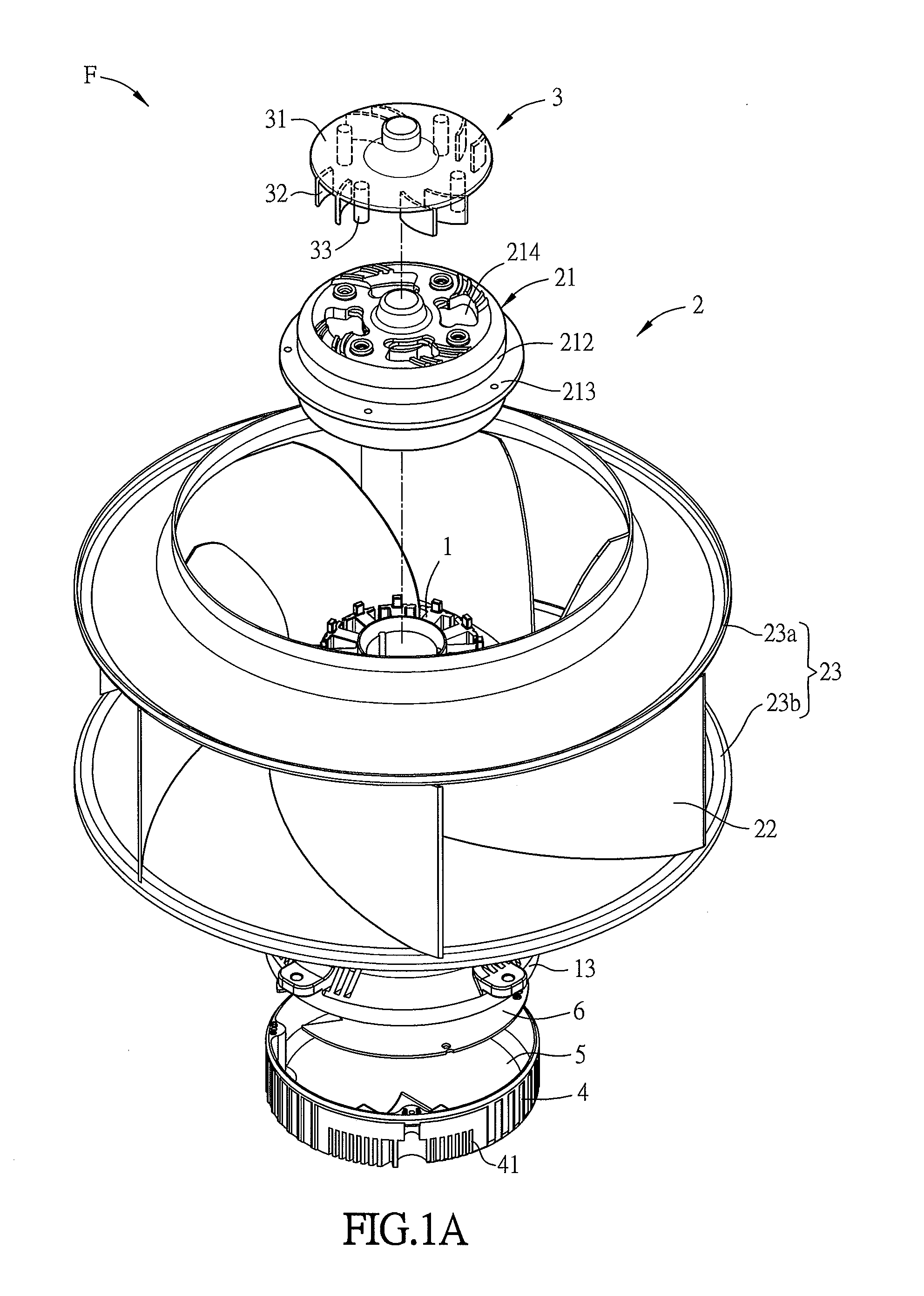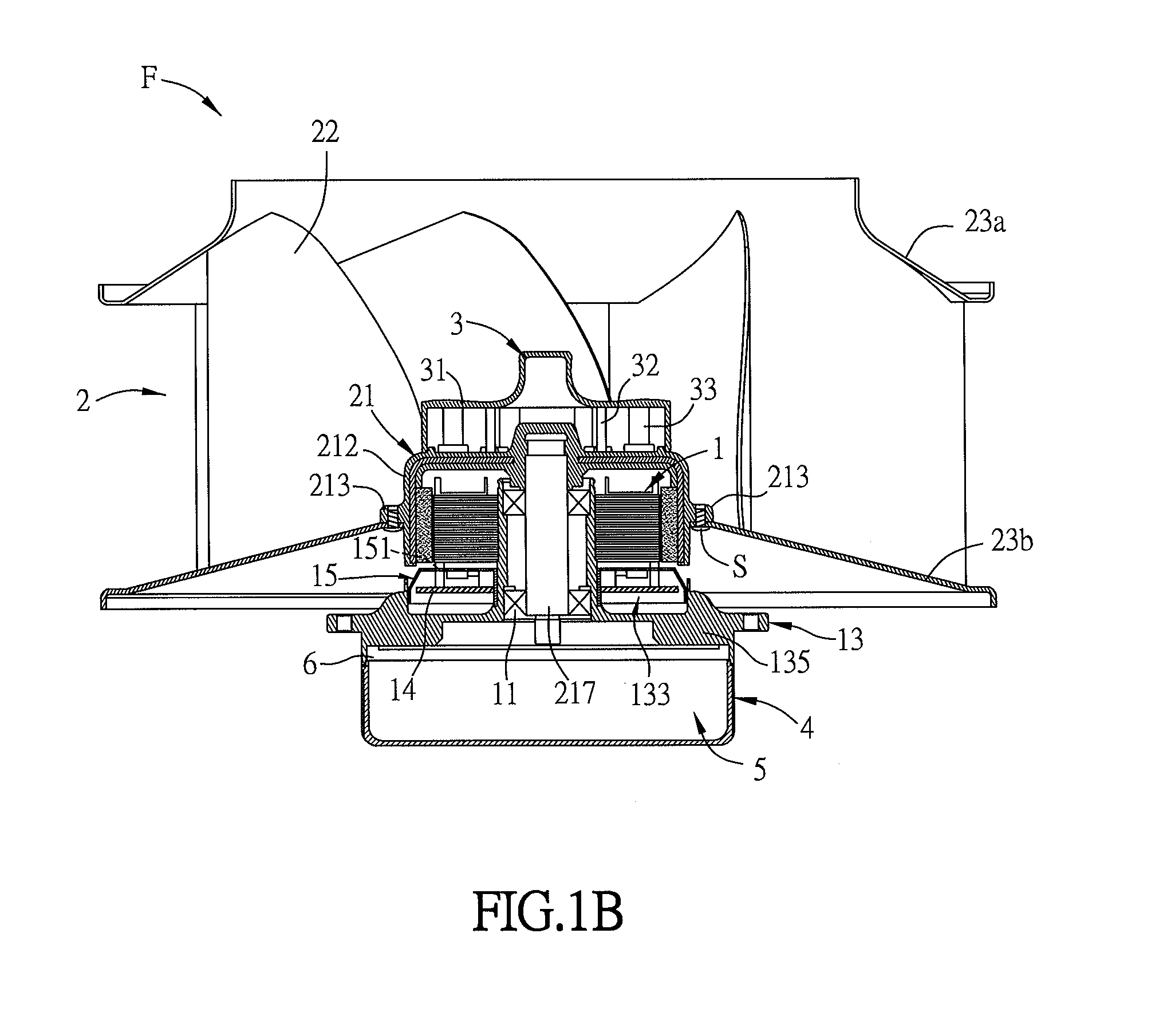Fan
a technology of fan blades and rotating blades, which is applied in the direction of positive displacement liquid engines, piston pumps, liquid fuel engines, etc., can solve the problems of blade deformation or breakage, physical limitation of the rotation speed of the fan in practice, dangerous situations, etc., to reduce the retention zone and turbulent flow, increase the lifespan of the motor, and reduce noise
- Summary
- Abstract
- Description
- Claims
- Application Information
AI Technical Summary
Benefits of technology
Problems solved by technology
Method used
Image
Examples
Embodiment Construction
[0050]The present invention will be apparent from the following detailed description, which proceeds with reference to the accompanying drawings, wherein the same references relate to the same elements.
[0051]FIG. 1A is an exploded top view of a fan F according to a preferred embodiment of the invention, and FIG. 1B is a sectional view of the fan F of FIG. 1A. Referring to FIGS. 1A and 1B, the fan F includes a motor 1, an impeller 2 and a heat-dissipating structure 3. The impeller 2 includes a hub 21 and a plurality of outer blades (first blades) 22. The hub 21 has a hollow structure for receiving the motor 1. The hub 21 includes a top portion 211 and a side wall 212 disposed around the top portion 211 as shown in FIG. 2.
[0052]With reference to FIGS. 1A and 1B, the impeller 2 further includes two annular structures 23, and the outer blades 22 are disposed between the two annular structures 23. One of the annular structures 23 is connected to the side wall 212 of the hub 21. In this e...
PUM
 Login to View More
Login to View More Abstract
Description
Claims
Application Information
 Login to View More
Login to View More - R&D
- Intellectual Property
- Life Sciences
- Materials
- Tech Scout
- Unparalleled Data Quality
- Higher Quality Content
- 60% Fewer Hallucinations
Browse by: Latest US Patents, China's latest patents, Technical Efficacy Thesaurus, Application Domain, Technology Topic, Popular Technical Reports.
© 2025 PatSnap. All rights reserved.Legal|Privacy policy|Modern Slavery Act Transparency Statement|Sitemap|About US| Contact US: help@patsnap.com



